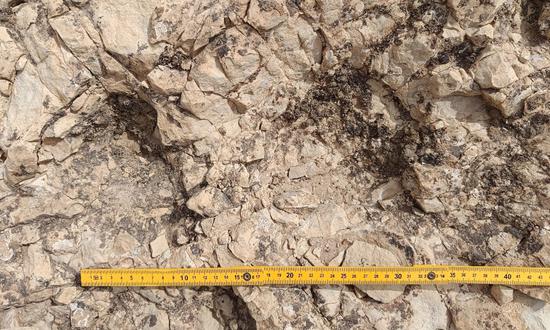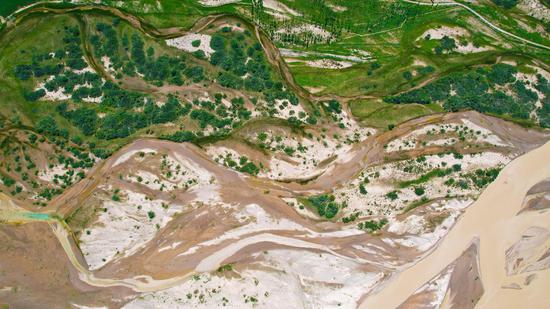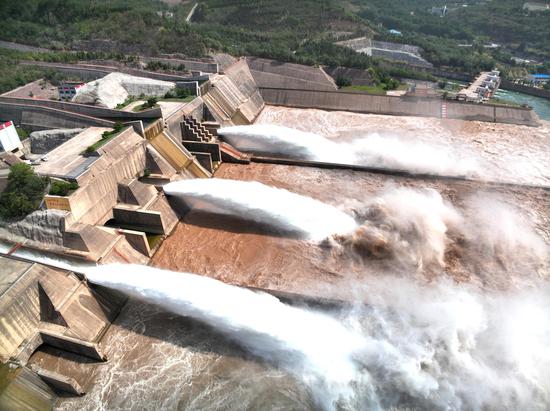
Cretaceous dinosaur footprints found in Northwest China's Ningxia Hui Autonomous Region (Photo/Courtesy of Xing Lida)
Paleontologists have discovered China's first large-scale cluster of sauropod dinosaur footprints in the Ningxia Hui Autonomous Region of Northwest China, shedding new light on the region's prehistoric ecosystems during the late Early Cretaceous period, Chinese dinosaur expert Xing Lida from the China University of Geosciences (Beijing) told the Global Times on Wednesday.
The international research team, led by Xing and including the Ningxia Geological Museum, Yan'an University, and international scholars from Germany and Australia, detailed the findings in the Swiss Journal of Palaeontology.
The 158 dinosaur footprints were preserved near Tongxin county, Wuzhong city, in Ningxia. The site's 12 trackways reveal two dominant print types: small quadrupedal sauropod tracks classified as Brontopodus, and bipedal impressions likely from theropod or ornithopod dinosaurs.
Notably, an 8.6-meter sauropod trackway captures a dramatic behavioral moment: at the eighth step, the dinosaur pivoted 38 degrees outward, reducing its stride from 100.4 centimeters to 52.4 centimeters as it turned northward. "Such clear evidence of locomotion changes is exceptionally rare," Xing noted.
He pointed out that this is the first record of Cretaceous dinosaur tracks in central Ningxia. It enhances our understanding of the distribution of Early Cretaceous tetrapod assemblages in China's northwestern region and offers fresh perspectives on how dinosaur faunas responded to and were affected by environmental changes.
Microscopic analysis uncovered insect larvae burrows within the footprints—one measuring 32 millimeters long—indicating that dinosaurs inadvertently created microhabitats. "This 'dino-turbation' shows how their footprints trapped rainwater, forming temporary ponds that attracted invertebrates," Xing explained.
The discovery contrasts with the dinosaur footprints found in other regions. Regional footprint variations suggest that terrestrial life adapted differently to Early Cretaceous marine oxygen fluctuations, potentially influenced by local hydrology.
Ningxia's Department of Natural Resources has initiated formal procedures to classify and protect the site under national fossil protection statutes. Plans include establishing reserves that balance scientific access with public education.


















































 京公網安備 11010202009201號
京公網安備 11010202009201號